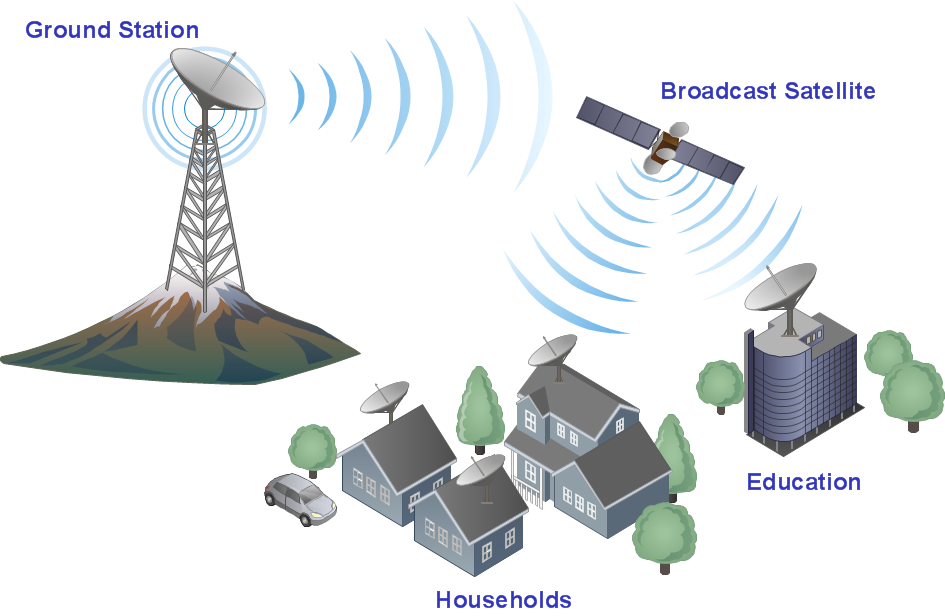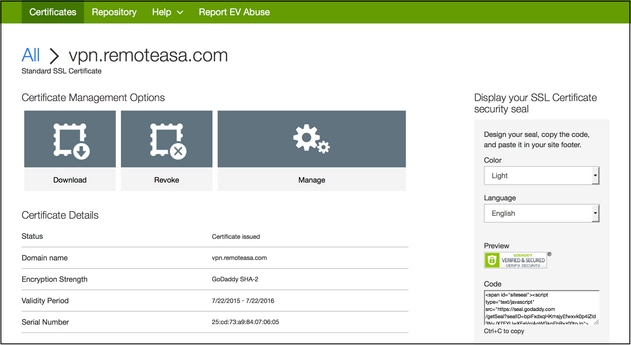
How To Install The Network Solutions Intermediate Certificate For Mac
Applicable Products
Mar 12, 2009 For this example, I will use Network Solutions as the Certificate Authority (CA) you are buying the cert from. This is information you will have to know when you purchase a new SSL cert or renew an existing SSL cert for your Exchange server, IIS web server,. This article is intended for use by System Administrators. If you are experiencing. Install the root certificate/intermediate certificate on the client machine. If an antivirus is installed. On Receiver for Mac. Citrix Discussions.
- NetScaler Gateway
- Receiver for Android
- Receiver for Linux
- Receiver for Mac
- Receiver for Windows
Symptoms or Error
Users may receive the following error when launching an application with Receiver for Windows 4.7, Receiver for Mac 12.5, Receiver for Android 3.12.2, Receiver for Linux 13.6 and newer:
Error: You have not chosen to trust '(CERT INFO)', the issuer of the server's security certificate. Contact your help desk for assistance.
Receiver for Mac
Receiver for Android
Solution
Important! This article is intended for use by System Administrators. If you are experiencing this issue and you are not a System Administrator, contact your organization’s Help Desk for assistance and refer them to this article.
Weasley house sims 3. The Sims 3' creators I usually use in my works. Thank all of you very much!
This issue may be caused by an out-of-date intermediate certificate installed at NetScaler Gateway. This does not mean that the CA certificates currently being used is expired but the CA has since released newer versions of that certificate.
Verify the certificate bindings at the NetScaler Gateway to resolve this issue.
To confirm this, visit the NetScaler Gateway website using a web browser, and examine the certificate chain in the web browser. You may wish to cross-check this by repeating with more than one web browser (such as with Google Chrome and Mozilla Firefox). Then, compare all the certificates in the browser's certificate chain with the certificate chain at NetScaler Gateway.
Note: Compare all the serial numbers in the certificates and not just the Subject Name. If there are any mismatches in intermediate certificates, this is a possible cause.
Update NetScaler Gateway with the corresponding intermediate certificates, as they appear in the web browser. You can export the intermediate certificates from the web browser. If you used more than one web browser, it is possible that they yield different certificate chains. If so, use the newer certificate chain.For more information about installing and linking an intermediate certificate with Primary CA on a NetScaler Gateway appliance, refer to CTX114146.
Problem Cause
The Receiver for Windows 4.7, Receiver for Mac 12.5, Receiver for Linux 13.6 and newer versions are going to validate the root certificates even if it trusts the intermediate, which is not the case with the browsers. If the browser trusts the intermediate, it trusts the server certificate, without going down to the root certificate and will display the newer version of the root from its certificate store and not the actual root certificate sent by the server or NetScaler Gateway.
In Receiver for Android 3.12.2, joint server certificate validation is turned off by default. If this policy is enabled in the Receiver without the correct set of certificates configured on the server/gateway, users may see the error message.
Additional Resources
CTX221453 - Citrix Receiver - SSL Error when connecting via NetScaler
Citrix Documentation - Receiver for Mac, Receiver for Android
CTX114146 - How to Install and Link Intermediate Certificate with Primary CA on NetScaler Gateway
In the past few years, the entire web hastransitioned from an optional secure HTTP protocol (also known as HTTPS) to ascenario where you can’t have a website today without securing it with an SSLcertificate.
This is because google starting displaying awarning message in its Chrome browser whenever a user would visit a website URLthat started with HTTP rather than HTTPS.
To make sure your website is up to websecurity standards, you’ll want to purchase an SSL certificate and install iton your website.

Determine Your Dedicated IP Address
For an SSL certificate to work, your webserver needs to have a fixed, dedicated IP address. If you have a dedicated webserver, you can usually find this IP address listed in your web hostingaccount.
If you don’t see it there, you can also findthe server IP address in the left pane of the cPanel tool.
Make a note of this IP address, since you’llneed it in the next step when you obtain your new SSL certificate.
Install Your Web Host’s SSLCertificate
The next step is to obtain an SSL certificatefor your website.
Since all websites on the internet these daysneed to use SSL if you want to make sure your users trust your website, manyweb hosting providers have started packaging free SSL certificates with hostingpackages.
If this is the case for you, look through thecPanel menu and look for a tool icon that matches the brand of a known SSLcertificate provider.
For example, the web host Siteground offerscustomers a free subscription to Let’s Encrypt SSL certificates.
If this is the case, you’re in luck.Installing SSL on your site is as easy as clicking on the SSL tool icon,selecting the domain you want to protect, and enabling SSL for that site.
Once it’s installed, your website will haveSSL installed and will start displaying to visitors as a secure website.
If you don’t see an SSL tool available incPanel, contact your web host just to confirm that they really don’t offer SSLcertificates.
If they don’t then you’ll need to purchase oneyourself and install it manually using the steps below.
Purchase a New SSL Certificate
You’ll need to find a good SSL certificateprovider. The cost of this service is relatively cheap, ranging anywhere from$30 to $100 a year.
Some of the top SSL certificate providers inthe world today include:
- Let’s Encrypt: Free, but requires you to frequently re-upload the certificate to renew it.
- Comodo SSL: Expensive, but offers a long list of extra features.
- Digicert: Inexpensive basic SSL to a pro version for large websites.
- GoDaddy: Well known for their web domain services, GoDaddy also sells website certificates.
- Network Solutions: Provides affordable basic SSL certificates for small sites as well as more expensive options for larger organizations.
- RapidSSL: This service is run by Symantec and offers some of the most affordable SSL options around.
To purchase the SSL certificate, you’ll needthe name of your domain, and the dedicated IP address of the web server thatyou noted above.
Once purchased, you’ll receive three pieces ofinformation.
A Certificate (CRT), which verifies yoursecure website’s authenticity from the certificate provider’s servers. APrivate Key (KEY), which serves as the “key” that’s used to decrypt and encryptyour certificate details when visitors visit your site. The key encryptscommunication between the visitor’s web browser and your web server.
The CA Bundle is the third piece ofinformation which bundles all of the intermediate certificates that make theoverall encrypted SSL certification work.
Once you have these three pieces ofinformation from your SSL provider, you’re ready to install the SSL certificateon your site.
How to Install an SSL Certificate
Log into your web hosting account and open thecPanel. Under Security, select the SSL/TLS Manager.
In the SSL/TLS Manager window, select the Manage SSL sites link at the bottom.
In the Manage SSL Hosts window, scroll to thebottom where you’ll find Install an SSLwebsite. Use the dropdown in this section to choose the host you want toapply the SSL certificate to. Then, in each field for Certificate, Private Key,and Certificate Authority Bundle (CA Bundle), fill in the long text entries youreceived when you initially purchased the SSL certificate.
Select the Install Certificate button at the bottom when you’re done.
Now your SSL certificate is installed for thatdomain, and will work whenever visitors type in your domain with the https in front of it.
Force Site Visitors to Use SSL
At this point, any visitors who’ve alreadyvisited your site will still use the old bookmark that has http in front of the domain. These visitors will still see thesecurity warning in Chrome that your website is unsafe.
This could cause you to lose a lot ofvisitors, since they won’t trust your website anymore and will stop visiting.
You can fix this by forcing the browser of allof your visitors to modify the URL so that httpsis always in the front.
In cPanel, in the Files section, double click the File Manager to open it. Navigate to the root level directory ofyour web directory. This is where you’ll find the .htaccess file. Right-click the file and choose Edit from the dropdown menu.
.htaccess is the file that controls web serverbehavior when people visit your site. You need to add special code in this fileto force your visitor’s browser to use https instead of http.
Edit mode will open the .htaccess file in thedefault editor on your local computer.
At the top of the file, insert the followingcode:
When you close the file, it’ll ask if you wantto save. Confirm the save. Now your new .htaccess file is active and users willbe forced to access your site via HTTPS.
Open a browser and type in the domain of yourwebsite.
If the SSL certificate is working correctly,in Chrome you’ll see a lock icon which means that the site is loading viaencrypted HTTPS protocol.
Other SSL Considerations
Even though your website is working properly,there are some features that will break once you switch over to SSL.
One of those is if you’re using a CDN serviceto serve your images from different servers around the world. Large websitesutilize CDN service to speed up image load times regardless where visitors arelocated around the world.
Jurisprudence study guide for dental assistants. Since your CDN is still serving images viaHTTP protocol, when visitors access your site via HTTPS, all of those imageswill appear broken.
To fix this, you’ll need to log into your CDNaccount, access SSL settings, and add a new SSL entry. You can paste the samecertificate, key, and CA bundle in those fields.
Once you save this entry, all images on yoursite will load via HTTPS protocol and load properly for all of your visitors.
There are a lot of benefits to upgrading yourwebsite to use SSL certificates. Most importantly, it ensures communicationbetween your visitor’s computer and your website are encrypted and protectedfrom hackers.
In addition, it brings your website up to thelatest web standards and ensures that no one will see any security errorswhenever they visit your site.